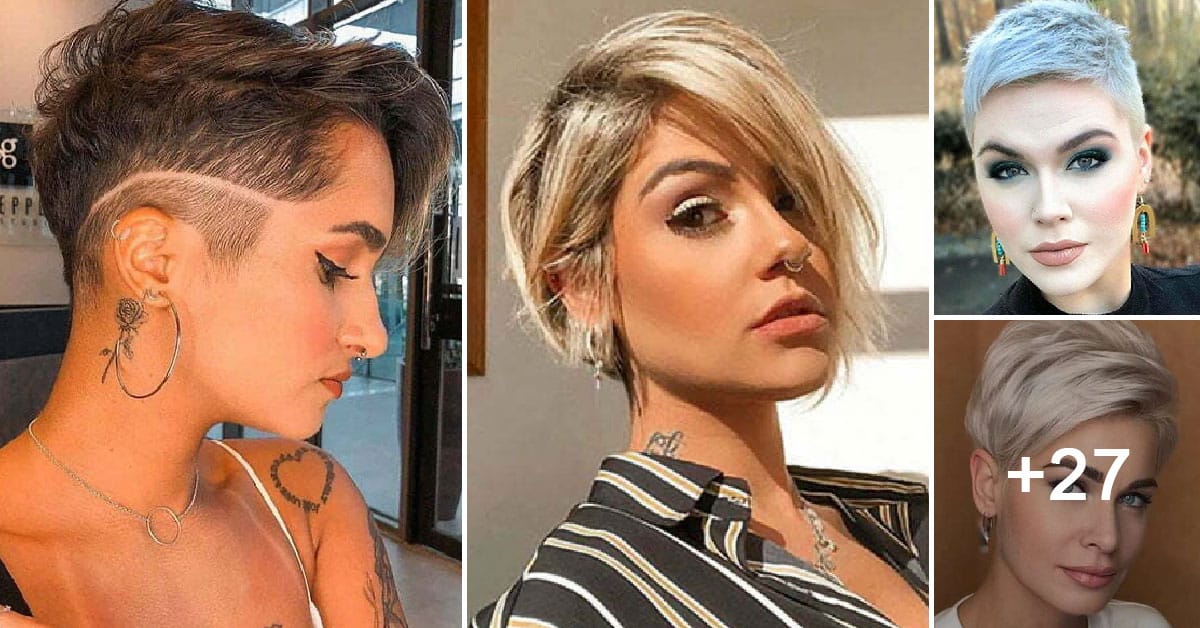The world of hairstyling is vast and continually evolving. Among the plethora of hairstyles available, one has managed to stand out both in terms of its audacity and its timeless allure—the pixie haircut. A style that whispers of androgyny, yet screams femininity, the pixie has been an iconic look for many decades. In this article, we’ll embark on a journey through the world of bold and sexy pixie haircuts, exploring their history, their cultural impact, and why they remain so beloved today.
Historical Glimpse
Though the pixie has been associated with modernity, its origins can be traced back much earlier than the 20th century. Various ancient cultures had short hairstyles for women, but it was only in the last century that the pixie started to shape its identity.
The roaring 20s introduced the world to flappers—bold women who embraced shorter dresses, loved jazz, and weren’t afraid to cut their hair into bobs. While not exactly the pixie we know today, this was a clear departure from the traditionally long locks women were expected to have.
However, the 1960s can be credited for the rise in popularity of the true pixie cut. Celebrities and style icons of the era, from Mia Farrow in “Rosemary’s Baby” to Twiggy with her iconic mod look, embraced the pixie with zeal. They paved the way for future generations, proving that femininity isn’t bound by hair length.
Cultural Impact
The pixie has always been more than just a haircut. It’s a statement. It’s about breaking norms, embracing oneself, and radiating confidence from within. Every strand in a pixie speaks of a rebellion against the traditional, a step towards individuality and self-expression.
The cut has been symbolic of many things over the decades—freedom, empowerment, change, and modernity. Think of the characters in movies and television who have donned this style—it’s almost always emblematic of a transformative journey or a strong personality.
Diverse and Inclusive
One of the unique features of the pixie cut is its adaptability. Whether it’s curly, straight, wavy, coarse, or fine hair, there’s a version of the pixie that fits. It’s not just versatile in terms of hair type, but also in terms of age and facial features. From young adults wanting a fresh look to older women seeking elegance and simplicity, the pixie has something for everyone.
Furthermore, the pixie haircut transcends borders. It’s found its place in various cultures and societies, tweaked and transformed to fit into local beauty standards and yet retaining its quintessential charm.
Modern Interpretations
In the contemporary world, the pixie haircut remains as influential as ever. Every year, stylists around the world reimagine this classic, giving it fresh twists and turns. Some infuse it with bold colors, while others play with its texture. The undercut pixie, the asymmetrical pixie, and the pixie with long bangs are just a few examples of how the haircut has evolved and yet stayed true to its roots.
Celebrities continue to embrace the pixie, from red carpet events to magazine covers, further solidifying its place in the pantheon of classic hairstyles.
The Power of the Pixie
Beyond its aesthetic appeal, the pixie cut embodies empowerment. It encourages the wearer to define beauty on their own terms, to move past societal expectations, and to wear their hair as a badge of honor and self-expression. It’s not just about looking good; it’s about feeling good, about embracing oneself wholeheartedly.
For many, getting a pixie is an act of liberation. It’s shedding layers, both literally and metaphorically. It’s about starting fresh, taking control, and rewriting one’s narrative.
In conclusion : The bold and sexy pixie haircut, despite its simplicity, carries with it a profound history and significance. It’s a testament to the ever-changing, yet eternal nature of beauty. A style that was once considered radical is now a staple, showing us that beauty standards are fluid and that confidence and authenticity always shine the brightest.
In the gallery of timeless hairstyles, the pixie undoubtedly holds a place of honor. It reminds us that sometimes, less truly is more. And as the pages of this gallery turn, one can only look forward with excitement to the many more interpretations and evolutions the pixie haircut is bound to undergo.
Check out these 30 stunning interpretations of the pixie haircut, each one a testament to its timeless allure and bold charm.

